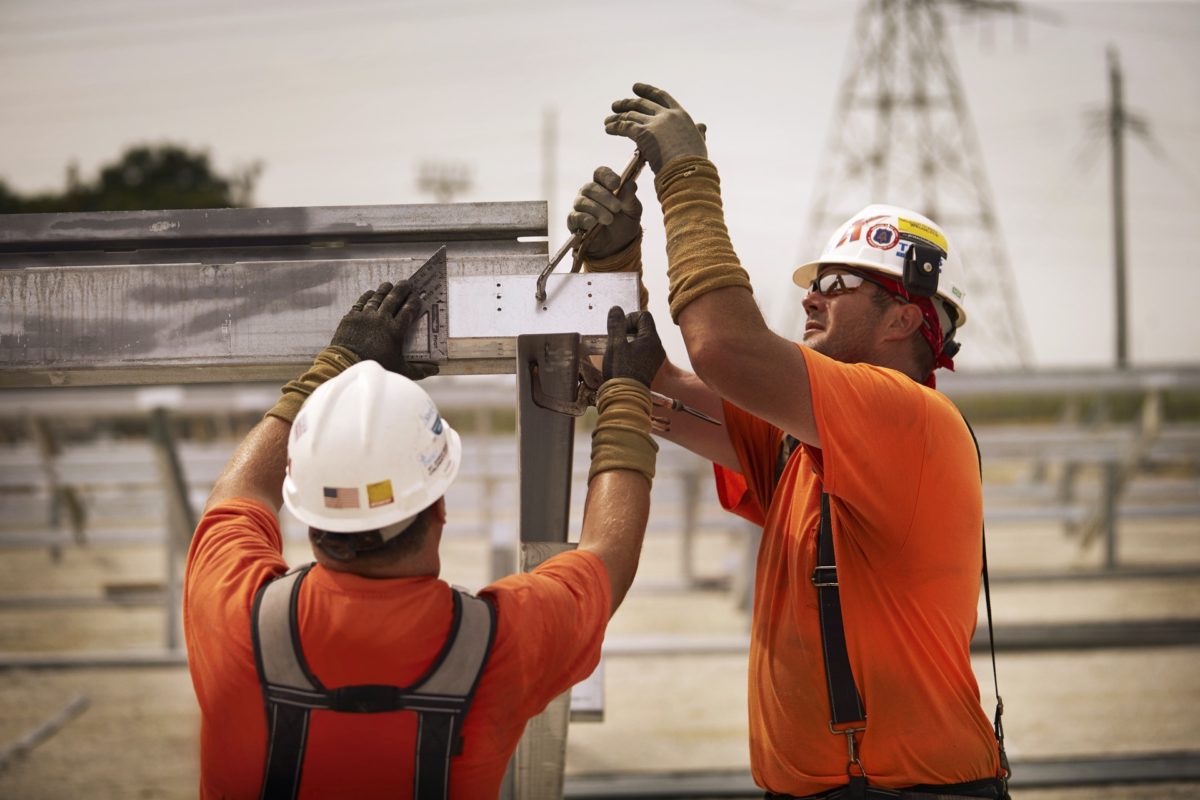The Inflation Reduction Act (IRA) added a requirement that all projects larger than one megawatt alternating current (1 MWac) must pay its workers a prevailing wage and institute an apprenticeship program, if the project wants to claim the full 30% investment tax credit IiTC) or the 2.6¢/kWh production tax credit (PTC). Residential projects, and commercial projects smaller than 1 MWac do not have to meet these requirements.
On November 30th, the U.S. Department of Treasury began to release guidance for the interpretation of these laws.
Prevailing wage
The IRA requires that all laborers and mechanics employed by the contractor or their subcontractors must be paid the local prevailing wage labor rate.
The Wage Determination page on SAM.gov provides information on the actual hourly wage that must be paid to specific laborer and mechanic job titles. The Treasury notes that contractors are responsible for keeping records that verify that the correct wages have been paid. Additionally, any work done on a project in the ten years following construction must also be paid the prevailing wage.
Importantly, the Treasury’s guidance states that any projects whose installation begins on or after January 30, 2023 is required to pay the full prevailing wage to employees. The Treasury notes that a project can prove that construction is underway by qualifying for the Five Percent Safe Harbour Rule or the Physical Work Test.
If prevailing wages aren’t paid, then the ITC will provide a 6% credit in place of the 30% credit, and the PTC’s based value before inflation adjustment will be 0.3¢/kWh versus the base 1.5¢/kWh.
Apprenticeship
The IRA also put in place another requirement for projects greater than 1 MWac: contractors employing four or more individuals to build a project must also employ at least one apprentice. This ratio of workers to apprentices is based on requirements set by the Department of Labor or state labor boards.
For all of 2023, the Treasury says projects must offer 10% of the hours to apprenticeships. This value increases to 12.5% for 2024, and 15% in 2025.
The Treasury notes that if a contractor requests apprentices from local boards providing these individuals, and they’re not available, then the contractor can still claim the full ITC or PTC requirements.
This content is protected by copyright and may not be reused. If you want to cooperate with us and would like to reuse some of our content, please contact: editors@pv-magazine.com.









By submitting this form you agree to pv magazine using your data for the purposes of publishing your comment.
Your personal data will only be disclosed or otherwise transmitted to third parties for the purposes of spam filtering or if this is necessary for technical maintenance of the website. Any other transfer to third parties will not take place unless this is justified on the basis of applicable data protection regulations or if pv magazine is legally obliged to do so.
You may revoke this consent at any time with effect for the future, in which case your personal data will be deleted immediately. Otherwise, your data will be deleted if pv magazine has processed your request or the purpose of data storage is fulfilled.
Further information on data privacy can be found in our Data Protection Policy.